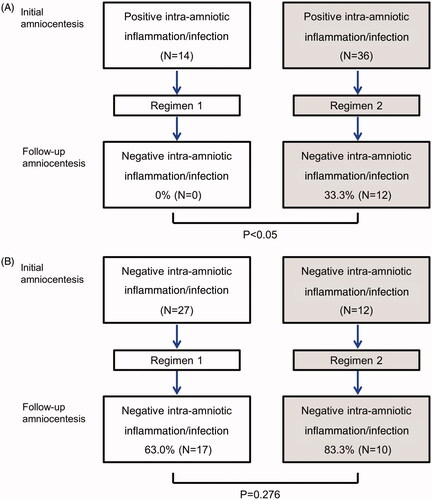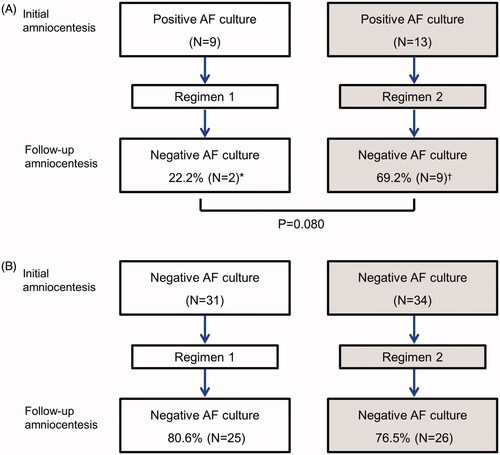Figures & data
Table 1. Demographics and clinical characteristics of the study population.
Table 2. Amniotic fluid culture, intra-amniotic inflammation and intra-amniotic infection/inflammation according to the antibiotics regimen and timing of amniocentesis.
Figure 1. Conversion of intra-amniotic infection/inflammation according to the antibiotic regimen. (A) Intra-amniotic infection/inflammation was eradicated in 33.3% of patients who had intra-amniotic infection/inflammation at the time of initial amniocentesis and received regimen 2, while none of patients who received regimen 1 showed negative conversion of intra-amniotic infection/inflammation (p < 0.05). (B) Among the patients without intra-amniotic inflammation/infection at the time of the first amniocentesis, 83.3% of patients who received regimen 2% and 63% of those who received regimen 1 remained without evidence of intra-amniotic infection/inflammation, which did not reach statistical significance (p = 0.276).

Figure 2. Conversion of intra-amniotic infection according to the antibiotic regimen. (A) 22.2% of patients with a positive amniotic fluid culture at the time of initial amniocentesis and who received regimen 1 had a conversion to a negative amniotic fluid culture at follow-up amniocentesis, while 69.2% of patients who received regimen 2, the amniotic cavity became sterile (p = 0.080) (B) There was no difference in the rate of development of de novo intra-amniotic infection according to the antibiotic regimen. *, All cases (2/2) with negative conversion of intra-amniotic infection had an intra-amniotic inflammation. †, Four (44.4%) of 9 cases with negative conversion of intra-amniotic infection had an intra-amniotic inflammation.

